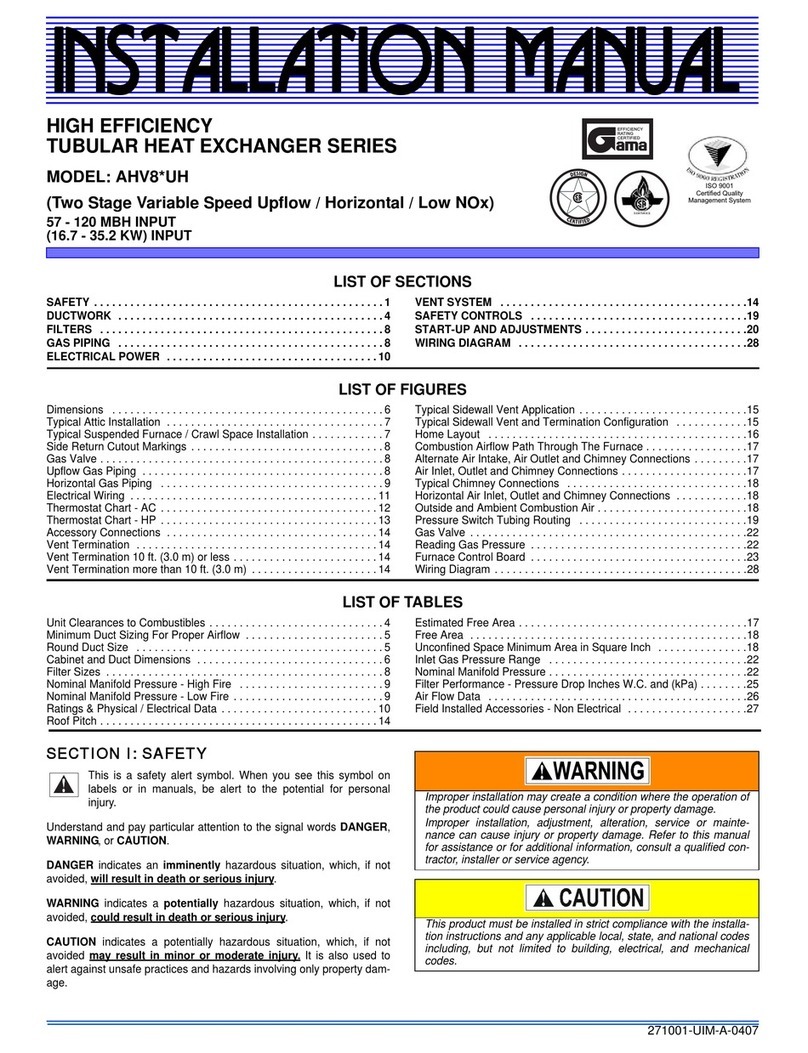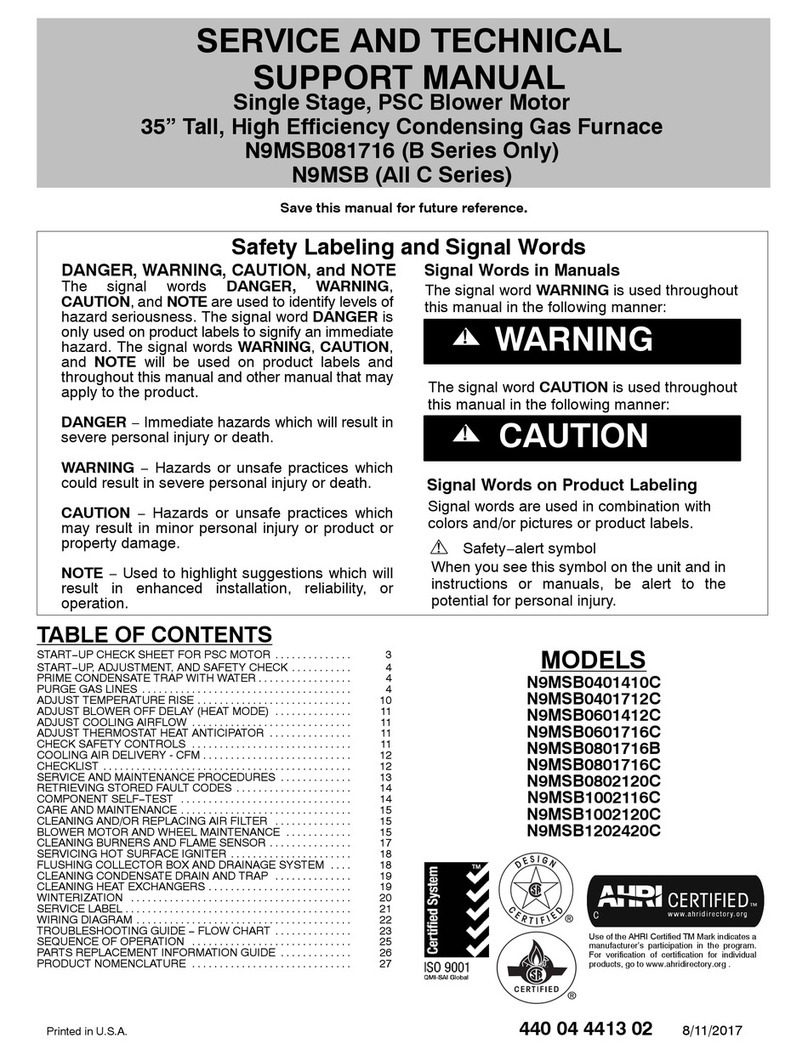
8 |Bosch 96% AFUE Gas Furnace User's Information Manual
11.2018 |Bosch Thermotechnology Corp.
Data subject to change
5 Routine Maintenance
5.1 Annual Inspection
WARNING:
The furnace must be inspected by a qualified installer or
service agency at least once per year.
Homeowners: Homeowners may only clean and replace
filters and replace fuses as required by basic maintenance.
All other operations, including installation, repair, and
service must be performed by a qualified installer, service
agency, or the gas supplier.
Service Reminder:
Call your service technician if the unit will not operate. Before calling,
always check the following to be sure service is required:
1. Check that electrical disconnect switches are ON.
2. Check all wiring for loose connections.
3. Check room thermostat for proper setting.
4. Replace any blown fuses or reset circuit breakers.
5. Gas valve should be ON.
6. Air filter should not be clogged/dirty, which will limit air flow.
7. Is gas turned on at the meter?
8. Is manual main shut-off valve open?
Record the model and serial number of the furnace. These numbers are
available on the warning label located on the blower access panel.
Serial Number: __________________________________________
Model Number: __________________________________________
Your qualified service professional must perform the following checks at the
beginning of the heating season. This will ensure that all furnace components are in
proper working order and that the heating system functions appropriately.
1. The Venting System
a. All flue gas carrying areas external to the furnace (i.e. chimney,
vent connector, vent pipe) are clear and free of obstructions.
b. Inspect heat exchangers and blowers for corrosion, deterioration,
or deposits of debris. Remove any obstructions.
c. The vent connector is in place, slopes upward and is physically
sound without holes or excessive corrosion.
d. The return-air duct connection(s) is physically sound, is sealed to
the furnace casing, and terminates outside the space containing
the furnace.
e. The physical support of the furnace is sound without sagging,
cracks, gaps, etc. around the base so as to provide a seal between
the support and the base.
f. There are no obvious signs of deterioration of the furnace.
g. The burner flames are in good adjustment (by comparison with
pictorial sketches or drawings of the main burner flame. Refer
to the Installation, Operation, and Maintenance Manual for more
information).
h. In applications which include a cooling coil, the condensate drain
and trap should be checked for leaks and cracks. The trap must be
filled with water and the drain and trap should be cleaned.
2. The Blower
The bearings in the induced draft blower and circulator blower motors
are permanently lubricated by the manufacturer. No further lubrication is
required. Check motor windings for accumulation of dust which may cause
overheating. Clean as necessary.
3. The Flame Sensor
Under some conditions the fuel or air supply can create a nearly invisible
coating on the flame sensor. This coating acts as an insulator causing a
drop in the flame sense signal. If the flame sense signal drops too low. The
furnace will not sense flame and will lock out. The flame sensor should be
carefully cleaned by a qualified servicer using emery cloth or steel wool.
Following cleaning the flame sense signal should be 1 to 6 microamps at
115 volts.
4. The Heat Exchanger
Inspect the heat exchanger for excessive rust, cracks, or holes. Visual
inspection is always best, but requires training and practice. There are tools
(field supplied) available to assist, such as inspection cameras and dye
penetration inspection systems. Inspect the metal flue for rust or holes, and
make sure it’s supported properly.
NOTICE:
If the heat exchangers get a heavy accumulation of soot and
carbon, they must be replaced rather than cleaning them. A
heavy build-up of soot and carbon indicates that a problem
exists which needs to be corrected, such as improper
adjustment of manifold pressure, insufficient or poor
quality combustion air, incorrect size or damaged manifold
orifice(s), improper gas, or a restricted heat exchanger.
In these scenarios, the heat exchanger assembly must be
replaced.
5. Condensate Drain
Inspect all condensate drain tubes and condensate trap assembly for leaks
and proper drainage.
5.2 Filters
A return air filter is not supplied with this furnace; however the installer will supply
filter(s) at the time of installation. Filters are installed external to the unit. Have
your installer instruct you on how to access your filters for routine maintenance.
Filter Maintenance
Improper filter maintenance is the most common cause of inadequate heating or
cooling performance. Inspect filters every month and clean (permanent) or replace
(disposable) as required. When replacing a filter, it must be replaced with a filter
of the same type and size. Become familiar with filter location and procedures for
removal cleaning and replacing them. If help is needed, contact the installer of the
furnace or a qualified service agency.
































